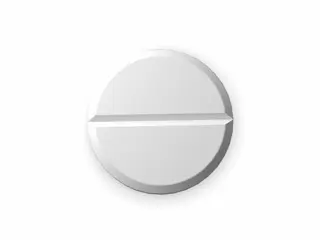Shop Clonidine Online UK
| Package | Dosage | Price | Price per Dose | |
|---|---|---|---|---|
| Dosage: 100mcg | ||||
| 270 pill | 100mcg | £368.06 | £1.36 | |
| 180 pill | 100mcg | £271.01 | £1.50 | |
| 120 pill | 100mcg | £197.63 | £1.65 | |
| 90 pill | 100mcg | £163.31 | £1.81 | |
| 60 pill | 100mcg | £124.26 | £2.07 | |

Clonidine Description
Overview of Clonidine
Clonidine is a medication often prescribed to manage high blood pressure. It belongs to a class of drugs called centrally acting alpha-2 adrenergic agonists. When taken, it works by stimulating alpha-2 receptors in the brain, which helps reduce the levels of certain chemicals that tighten blood vessels. This action results in dilated blood vessels and ultimately lowers blood pressure. Clonidine is also used for other medical conditions such as ADHD and certain withdrawal symptoms, making it a versatile medication. Its effectiveness in lowering blood pressure has made it a common choice in both outpatient and inpatient settings.
How Clonidine Works
The primary mechanism of Clonidine involves its action on the central nervous system. By activating alpha-2 receptors, it reduces sympathetic outflow from the brain. This reduction causes a decrease in heart rate and blood vessel constriction. As a result, blood pressure drops to safer levels. The medication's ability to act centrally makes it different from many other antihypertensive drugs that work directly on blood vessels or the heart. It also has the benefit of providing quick effects, which can be particularly useful in hypertensive crises or emergencies. However, due to its central action, it can also cause side effects related to the nervous system, such as dizziness, dry mouth, and fatigue.
Administration and Dosage
Clonidine is typically available in various forms, including tablets, patches, and injections. The oral tablets are usually taken once or twice daily, depending on the prescribed dose. The transdermal patches are designed for once-weekly application, which can improve compliance in some patients. When using the patches, it’s important to follow the instructions carefully to ensure proper absorption and avoid skin irritation. The dosage varies based on individual health status, age, and response to treatment. It’s essential to follow the prescribing doctor's instructions closely and not to alter the dose without medical advice. Regular monitoring of blood pressure and assessment of side effects are necessary to optimize therapy with Clonidine.
Possible Side Effects
While Clonidine is effective, it can cause several side effects. The most common include dry mouth, drowsiness, sedation, and dizziness. Some patients may experience constipation or skin reactions at the application site when using the patch. In rare cases, Clonidine can lead to low blood pressure (hypotension), which may cause fainting or weakness. Sudden discontinuation can also cause a rapid increase in blood pressure, making it important to taper off the medication gradually under medical supervision. Long-term use may also result in rebound hypertension if the medication stops abruptly. Therefore, patients are advised to communicate any side effects or concerns to their healthcare provider promptly.
Safety and Precautions
There are certain safety considerations to keep in mind when taking Clonidine. It should be used cautiously in patients with kidney problems, heart disease, or a history of certain mental health conditions. Pregnant or breastfeeding women should consult their doctor before use. Patients should inform their healthcare provider about all medications they are taking, as Clonidine can interact with other drugs, especially those that affect blood pressure or central nervous system function. Additionally, abrupt withdrawal of Clonidine is not recommended, as it may cause a hypertensive crisis. Regular follow-up visits and blood pressure monitoring are essential to ensure the medication is working effectively and safely. Patients should adhere strictly to prescribed doses and report any unusual symptoms promptly.


